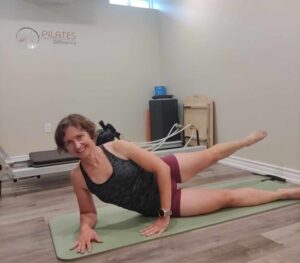Perimenopause—the transitional phase leading up to menopause—can bring a wide range of physical and emotional symptoms. Fatigue, weight gain, joint stiffness, mood swings, poor sleep, and loss of bone density are just some of the challenges women face during this time. Fortunately, movement-based practices like Pilates training and weight training offer science-backed support to help ease these transitions and support long-term health.
Understanding Perimenopause Symptoms
Perimenopause typically begins in a woman’s 40s, but symptoms can start earlier and last anywhere from a few years to over a decade. The hormonal fluctuations, especially declining estrogen levels, affect not just the reproductive system but also the musculoskeletal, cardiovascular, and nervous systems. Common perimenopause symptoms include:
-
Hot flashes
-
Mood changes
-
Weight gain (especially around the abdomen)
-
Sleep disturbances
-
Reduced muscle mass
-
Decreased bone density
Exercise—especially strength-based movement like Pilates and resistance training—has been shown to help regulate many of these changes.
How Pilates Training Supports Perimenopausal Health
 Pilates training emphasizes controlled movement, breath, and core engagement. It’s particularly beneficial for women in perimenopause because it improves posture, builds joint stability, and supports pelvic floor health—all of which can be compromised during this life stage.
Pilates training emphasizes controlled movement, breath, and core engagement. It’s particularly beneficial for women in perimenopause because it improves posture, builds joint stability, and supports pelvic floor health—all of which can be compromised during this life stage.
A study published in Maturitas (2016) found that 12 weeks of mat-based Pilates significantly improved body composition, muscular endurance, and flexibility in perimenopausal women, while also reducing general menopausal symptoms.
🔗 Read the study here
Other benefits include:
-
Improved body awareness and proprioception, helping prevent falls and injuries
-
Reduced stress and better mood through focused breathing and mindful movement
-
Support for spine and pelvic alignment, key for women experiencing core weakness or bladder issues
The Role of Weight Training in Perimenopause
Weight training is one of the most recommended exercise methods during midlife—and for good reason. It helps counter the natural muscle and bone loss caused by hormonal changes.
A comprehensive review by the North American Menopause Society shows that resistance training can increase bone mineral density, improve lean body mass, and reduce anxiety and depression in perimenopausal women.
🔗 See research overview
According to a 2018 review in JAMA Psychiatry, resistance exercise significantly reduces depressive symptoms, especially in midlife women.
🔗 View study summary
Key outcomes include:
-
Increased metabolic rate and support for healthy weight
-
Improved insulin sensitivity (which tends to decline during perimenopause)
-
Enhanced strength and stamina for everyday activities
Combining Pilates Training with Strength Work
The best approach may be combining the low-impact, alignment-focused benefits of Pilates training with the metabolic and musculoskeletal gains of resistance training. Together, they offer a holistic solution to managing perimenopause symptoms—both physically and emotionally.
You don’t need to train like an athlete to see benefits. Two to three sessions per week of Pilates, strength training, or a combination of both can lead to noticeable improvements in energy, mood, posture, and sleep.
Final Thoughts
If you’re navigating the ups and downs of perimenopause, incorporating Pilates training and resistance exercises into your routine can help you regain control, strength, and peace of mind. Backed by science and rooted in self-care, these movement modalities offer a proactive, empowering way to feel good in your changing body.
Ready to start? Contact us to join a class or schedule a personalized program that supports your body through this powerful transition. We serve clients in Milton, Georgetown, Campbellville and Halton Hills. We offer small group size and plenty of personalized attention to make sure you have the most from your training. Check out website for group class schedule and we will see you in the class!
